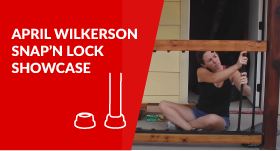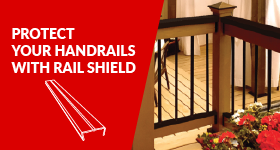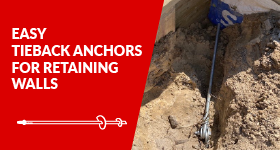Menu
Your cart is empty
Looks like you haven't added anything to your cart yet
TODAY TO JULY 5
Independence Day & Canada Day Sale
SAVE 20% ON
All Products
DISCOUNT EXPIRES IN 2 WEEKS!
LIMETED SALE! SAVE 20%!

LIMETED SALE! SAVE 20%!
Assessing Pole Barn Foundation Options for Building and Installing Pole Barn Posts and Footings
Pole barns are versatile structures used for various purposes such as storage, workshops, and agricultural buildings. The key to a sturdy pole barn lies in the proper installation of posts and footings. Several methods are available for building and installing pole barn posts and footings, each with its own set of advantages and disadvantages in terms of financial cost, labor cost, and time efficiency.
1. The Direct Bury Method
Pros:
-
Financial Cost: This method is relatively inexpensive as it requires minimal materials—just the posts and concrete for securing them.
-
Labor Cost/Time: It is straightforward and quick, reducing labor time. A small team can complete the installation in a short period.
Cons:
-
Durability: Posts are in direct contact with soil, which can lead to rot and decay over time, especially in wet climates.
-
Maintenance: Requires periodic inspection and potential replacement of posts, increasing long-term maintenance costs.

2. Concrete Footings
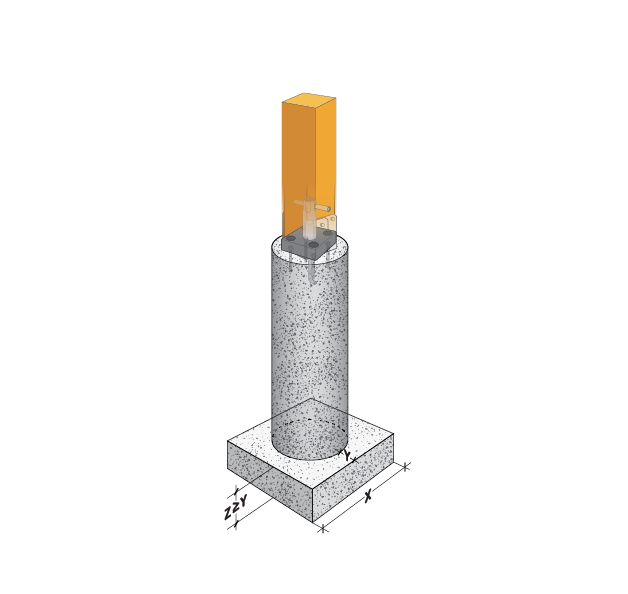
Pros:
-
Durability: Concrete footings provide a stable base and protect the posts from soil moisture,
significantly extending their lifespan.
-
Structural Integrity: Offers better load distribution, making the structure more stable and
capable of handling heavier loads.
Cons:
-
Financial Cost: Higher initial costs due to the need for more materials (concrete and rebar) and
potentially hiring professional concrete workers.
-
Labor Cost/Time: More labour-intensive and time-consuming, requiring precise measurements,
excavation, and curing time for concrete.
3. Perma-Column® System
The Perma-Column® system uses precast concrete columns that keep wooden posts above ground, preventing direct soil contact.
Pros:
-
Longevity: Since the wood does not touch the ground, the risk of decay is minimised, offering a
long-lasting solution.
-
Strength: Provides excellent structural support, enhancing the overall stability of the pole barn.
Cons:
-
Financial Cost: One of the more expensive options due to the cost of prefabricated concrete
columns.
-
Labor Cost/Time: Installation can be more complex, requiring specialised equipment and skilled
labour, thus increasing both time and labor costs.
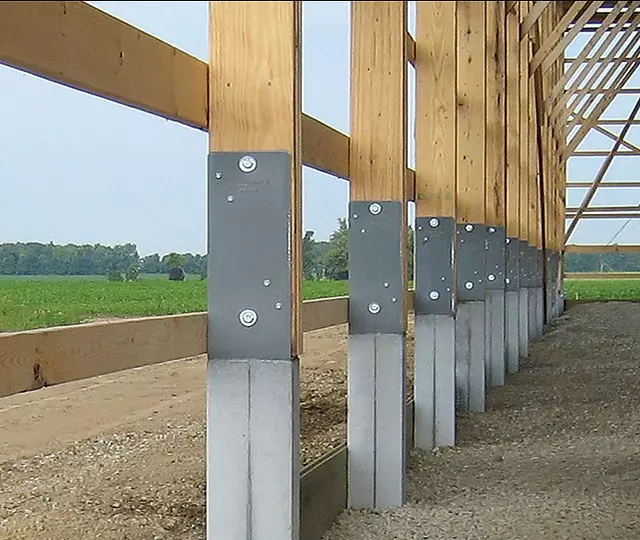
Image taken from https://permacolumn.com/
4. Post Protector Sleeves
Post protector sleeves are plastic sleeves that encase the bottom portion of the wooden posts, creating a barrier against soil moisture and pests.
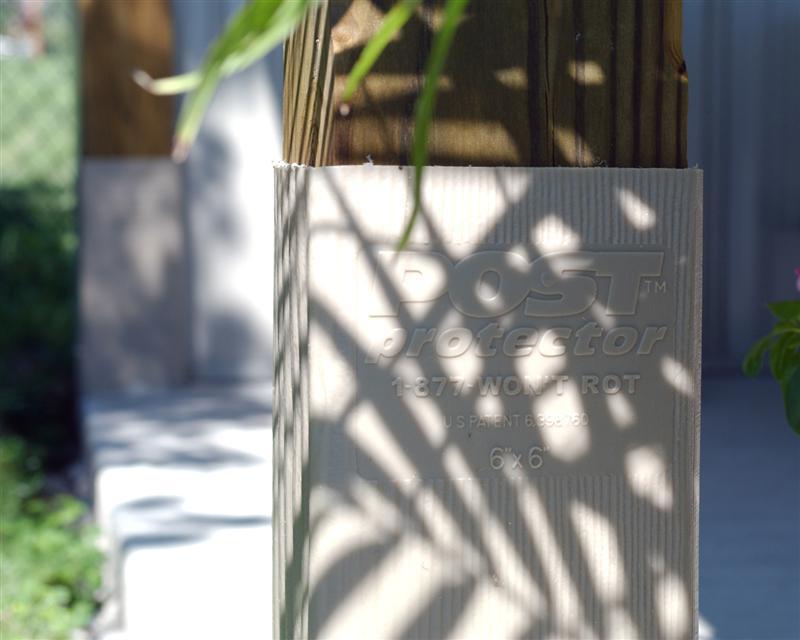
Image taken from https://www.postprotector.com/
Pros:
-
Durability: Concrete footings provide a stable base and protect the posts from soil moisture,
significantly extending their lifespan.
-
Structural Integrity: Offers better load distribution, making the structure more stable and
capable of handling heavier loads.
Cons:
-
Financial Cost: Higher initial costs due to the need for more materials (concrete and rebar) and
potentially hiring professional concrete workers.
-
Labor Cost/Time: More labor-intensive and time-consuming, requiring precise measurements,
excavation, and curing time for concrete.
5. Atlas Concrete Foot Anchor
The Atlas Concrete Foot Anchor™ is a simple idea, but highly effective. The galvanized 14 gauge ribbed bracket is secured by 16d common hot galvanized nails and loops under the bottom of the post creating a cavity for the cement to fill during a single pour. This locks the post permanently to the concrete and spreads out the load increasing the bearing surface. It also creates more lateral and uplift resistance if dug deep enough.
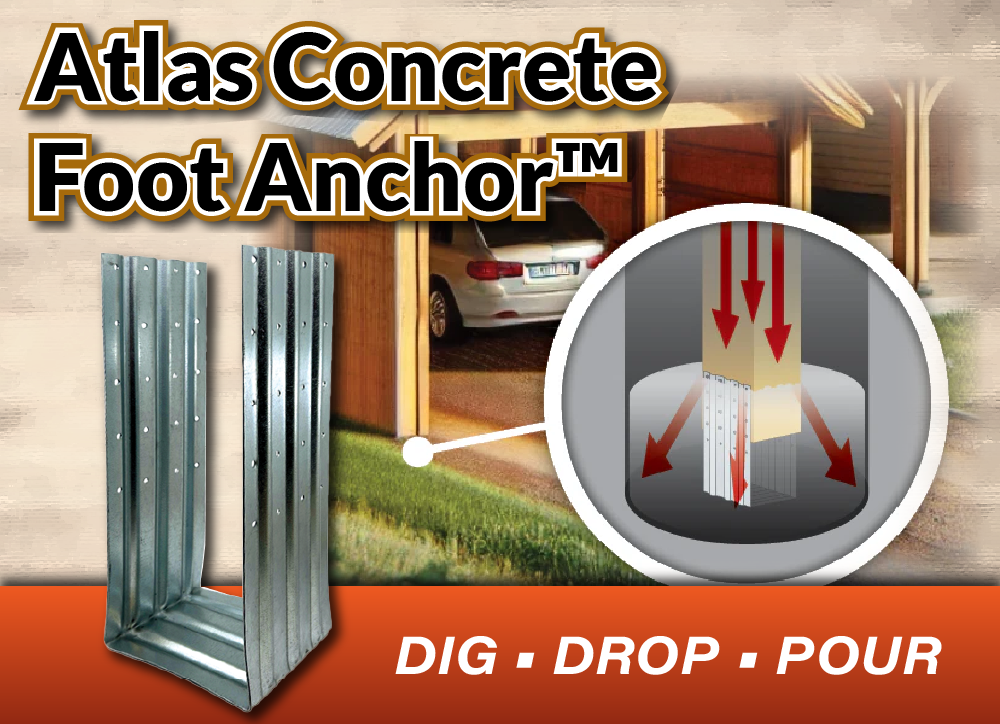
Benefits:
-
Less Material, Time, Labor, and Cost
-
Lightweight and Easy to Handle
-
Increased Bearing Surface and Superior Uplift Resistance
-
Permanent Connection Between Post and Concrete Footing
-
No Metal Post Base Required
Patented Nail-On Brackets with ground contact treated posts allow for a single concrete pour locking the post and bracket together for an inseparable footing. Then just backfill the rest of the hole and start building.

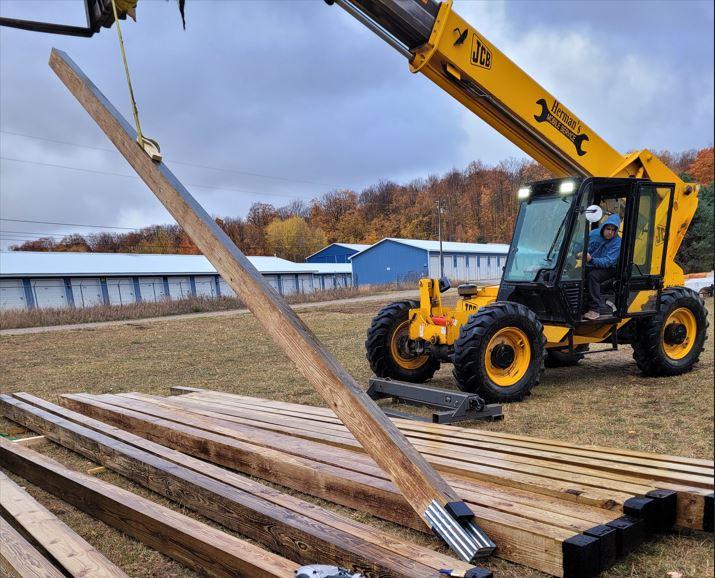
The versatility of the Atlas Concrete Foot Anchor™ makes it an excellent choice not only for pole barns but also for a variety of other structures. Whether you’re building carports, decks, or porches, this product provides a reliable foundation that enhances stability and durability.
By using the Atlas Concrete Foot Anchor™, builders can achieve a solid, permanent connection in various applications, simplifying the construction process and ensuring long-lasting performance.
Conclusion
Selecting the ideal method for installing pole barn posts and footings involves weighing financial and labor costs against the desired longevity and stability of the structure.
While the direct bury method is cost-effective and quick, it may lead to more maintenance over time. Concrete footings and systems like Perma-Column® provide enhanced durability but come with higher initial costs. Post protector sleeves offer a balanced solution with moderate costs and protection. The Atlas Concrete Foot Anchor™ offers an efficient and cost-effective solution for a variety of concrete footings.
Ultimately, the best method will depend on your specific requirements and budget.
CHECK OUT OUR MOST POPULAR CONTENT
- Choosing a selection results in a full page refresh.
Follow us
© 2026, DecksGo Powered by Shopify








































